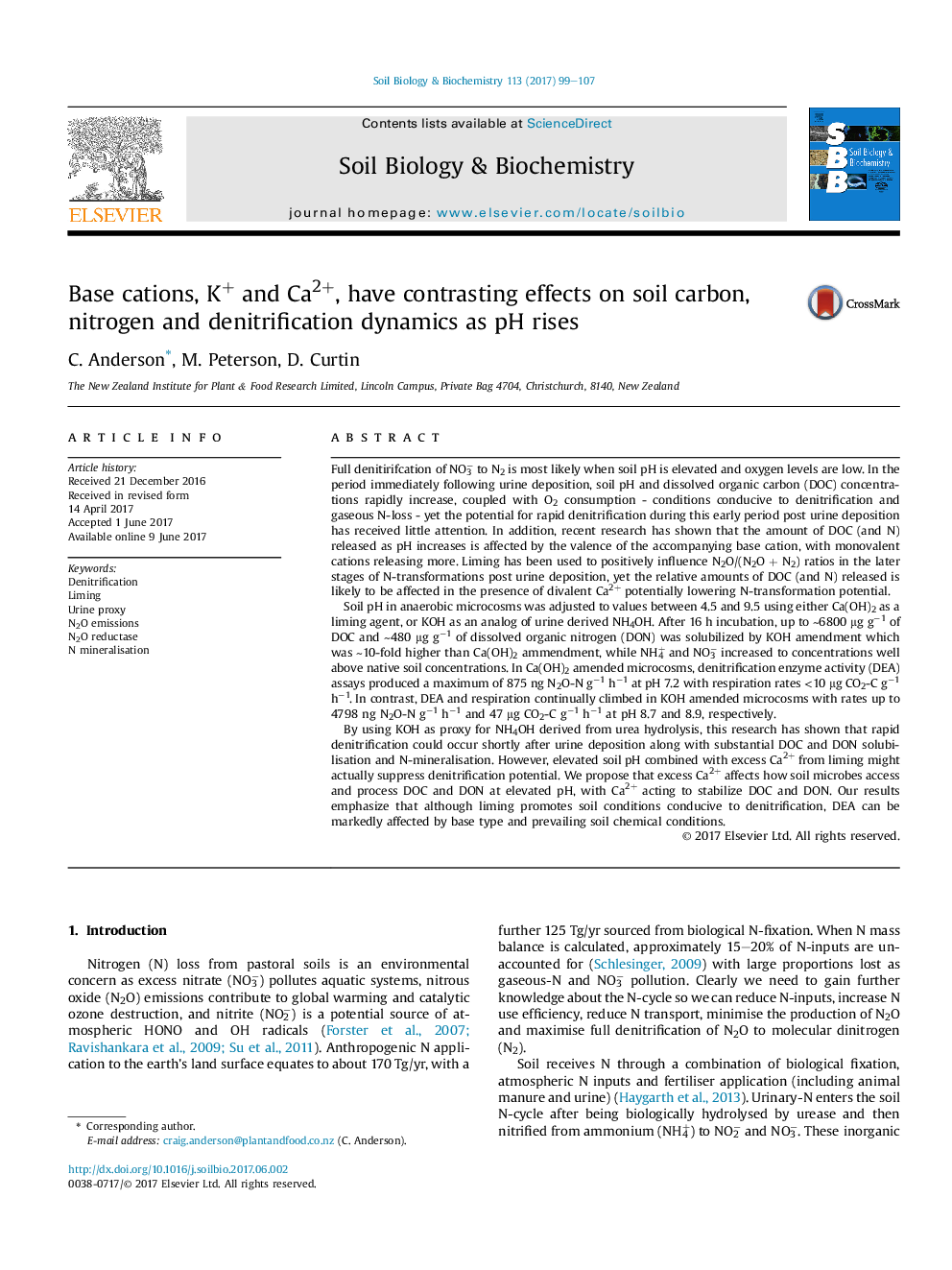| کد مقاله | کد نشریه | سال انتشار | مقاله انگلیسی | نسخه تمام متن |
|---|---|---|---|---|
| 5516371 | 1542571 | 2017 | 9 صفحه PDF | دانلود رایگان |

- Anaerobic alkaline conditions with excess Ca2+ ions inhibits denitrification.
- Anaerobic alkaline conditions with excess K+ ions promotes denitrification.
- Denitrification increases concomitantly with dissolved organic matter (DOM).
- With K+, organic N mineralisation is required to supply extra NH4+ and NO3â
- Proposed mechanism is that Ca2+ affects accessibility and processing of DOM.
Full denitirifcation of NO3â to N2 is most likely when soil pH is elevated and oxygen levels are low. In the period immediately following urine deposition, soil pH and dissolved organic carbon (DOC) concentrations rapidly increase, coupled with O2 consumption - conditions conducive to denitrification and gaseous N-loss - yet the potential for rapid denitrification during this early period post urine deposition has received little attention. In addition, recent research has shown that the amount of DOC (and N) released as pH increases is affected by the valence of the accompanying base cation, with monovalent cations releasing more. Liming has been used to positively influence N2O/(N2O + N2) ratios in the later stages of N-transformations post urine deposition, yet the relative amounts of DOC (and N) released is likely to be affected in the presence of divalent Ca2+ potentially lowering N-transformation potential.Soil pH in anaerobic microcosms was adjusted to values between 4.5 and 9.5 using either Ca(OH)2 as a liming agent, or KOH as an analog of urine derived NH4OH. After 16 h incubation, up to â¼6800 μg gâ1 of DOC and â¼480 μg gâ1 of dissolved organic nitrogen (DON) was solubilized by KOH amendment which was â¼10-fold higher than Ca(OH)2 ammendment, while NH4+ and NO3â increased to concentrations well above native soil concentrations. In Ca(OH)2 amended microcosms, denitrification enzyme activity (DEA) assays produced a maximum of 875 ng N2O-N gâ1 hâ1 at pH 7.2 with respiration rates <10 μg CO2-C gâ1 hâ1. In contrast, DEA and respiration continually climbed in KOH amended microcosms with rates up to 4798 ng N2O-N gâ1 hâ1 and 47 μg CO2-C gâ1 hâ1 at pH 8.7 and 8.9, respectively.By using KOH as proxy for NH4OH derived from urea hydrolysis, this research has shown that rapid denitrification could occur shortly after urine deposition along with substantial DOC and DON solubilisation and N-mineralisation. However, elevated soil pH combined with excess Ca2+ from liming might actually suppress denitrification potential. We propose that excess Ca2+ affects how soil microbes access and process DOC and DON at elevated pH, with Ca2+ acting to stabilize DOC and DON. Our results emphasize that although liming promotes soil conditions conducive to denitrification, DEA can be markedly affected by base type and prevailing soil chemical conditions.
Journal: Soil Biology and Biochemistry - Volume 113, October 2017, Pages 99-107